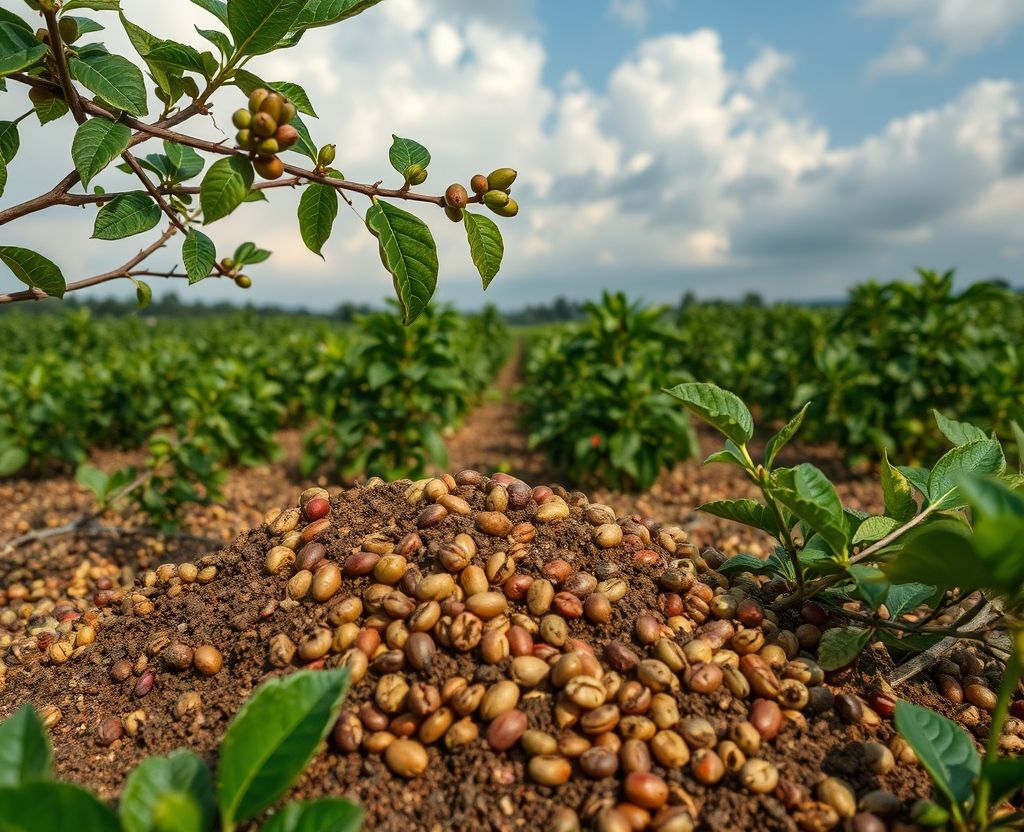Цены на кофе в июне 2025 года вновь продемонстрировали высокую нестабильность на фоне сокращения мировых запасов, угроз заморозков в Бразилии, снижения производства в ряде ключевых стран и нарастающей напряжённости в мировой экономике и политике.
Фьючерсный рынок: волатильность на фоне дефицита запасов и климатических факторов
Неделя с 9 по 13 июня началась с осторожного оптимизма. Причиной тому стало резкое сокращение сертифицированных запасов на 61 500 мешков. Запасы кофе в странах Европы упали до 7.07 миллиона мешков, что на 5 миллионов меньше среднего показателя за пять лет. В Японии объёмы также остались ниже нормы и составили 2.21 миллиона мешков.
Понедельник прошёл относительно спокойно: рынок открылся на отметке 357.85 центов за фунт и закрылся на уровне 361.55. Вторник стал самым волатильным днём недели — цены резко подскочили до уровня 370 на фоне прогнозов заморозков в районах Гуаксупе и Покос в бразильском штате Минас-Жерайс, но затем снова упали и закрылись на отметке 355.05.
С среды началось устойчивое снижение, поскольку морозы так и не наступили, а цены не смогли преодолеть ключевые уровни сопротивления. В среду рынок закрылся на отметке 350.65, в четверг — на 347.80. В пятницу котировки опустились до минимума 338, вызвав активные закупки со стороны обжарщиков, и неделя завершилась на уровне 349.70.
Рынок робусты: краткосрочный рост и новое снижение
Лондонский рынок робусты временно восстановился после шестидневного падения, когда цены достигли минимума с ноября 2024 года — 4 315 долларов за тонну. Однако к концу недели рынок снова просел, закрывшись на отметке 4 440 долларов. Эти значения значительно ниже рекорда этого года в 5 800 долларов.
Производство: разные тенденции в Бразилии, Колумбии и Центральной Америке
В Бразилии ожидается снижение урожая арабики на 11%, до 40.46 миллиона мешков. При этом производство робусты может вырасти на 20%, достигнув 25 миллионов мешков. Совокупный урожай прогнозируется на уровне 65.51 миллиона мешков. Некоторые агрономы считают, что урожай робусты может превзойти ожидания как по объёму, так и по качеству.
В Центральной Америке в целом ожидается рост урожая, за исключением Коста-Рики. По данным Министерства сельского хозяйства США, сбор в сезоне 2025/2026 составит 1.17 миллиона мешков, что на 10% меньше предыдущего года. Ранее, в сезоне 2024/2025, урожай вырос на 12% благодаря бицикличности кофейных деревьев, но затяжные дожди в ноябре и декабре повредили цветение и плодоношение.
В Колумбии прогнозируется сокращение производства на 5.3% — до 12.5 миллиона мешков. Несмотря на восстановление после Эль-Ниньо, нынешние сильные дожди могут негативно сказаться на цветении, особенно на юге страны. Дополнительно, высокие цены сдерживают инвестиции в омоложение кофейных плантаций.
Запасы и позиции участников рынка
-
Объём сертифицированных запасов арабики: 846 291 мешок
-
Мешков на стадии оценки: 77 961 (на 45 425 меньше, чем на прошлой неделе)
-
Чистая длинная позиция инвесторов: 21 712 контрактов
-
Чистая короткая позиция коммерческих участников: 53 686 контрактов
Органический кофе: задержки поставок из-за пестицидов
Производители органического кофе в Латинской Америке сталкиваются с проблемами при экспорте в Европу. Остатки глифосата — гербицида, используемого на соседних неорганических фермах, — попадают на органическую продукцию с ветром, что приводит к отказу при таможенной проверке. На фоне финансового давления и высоких цен многие экспортеры не готовы заключать долгосрочные контракты без уверенности в наличии физического товара.
Макроэкономика и валюты: снижение прогнозов и геополитическая напряжённость
Мировой банк понизил прогноз глобального роста в 2025 году до 2.3% — самого низкого показателя с 1960-х годов. Организация экономического сотрудничества и развития оценила рост на уровне 2.9% в 2025 и 2026 годах. На этом фоне индекс доллара США просел до трёхлетнего минимума на фоне опасений по поводу торговых войн и геополитики, но частично восстановился к концу недели после достижения соглашения с Китаем.
Фунт стерлингов ослаб из-за роста безработицы до 4.6% в апреле — это самый высокий уровень с августа 2021 года. Рост заработной платы замедлился до 5.2%, а валовой внутренний продукт сократился на 0.3% в том же месяце, что стало самым значительным спадом с октября 2023 года.
Обострение конфликта на Ближнем Востоке: рост цен на нефть
13 июня Израиль нанёс новые авиаудары по Тегерану, что привело к резкому росту напряжённости. Иран — один из крупнейших поставщиков нефти в Китай и Индию, и цены на нефть выросли на 10% сразу после инцидента. Эксперты не исключают дальнейшего роста цен, если будут нарушены поставки или затронуты транспортные каналы.
Комментарий от Qahwa World
Июньский отчёт за 2025 год демонстрирует хрупкость мирового кофейного рынка. Природные катаклизмы, сокращение инвестиций, падение запасов и политическая нестабильность — всё это создаёт серьёзные вызовы для производителей, обжарщиков и трейдеров. Впереди — неопределённая вторая половина года, которая потребует гибкости и стратегического подхода от всех участников отрасли.
